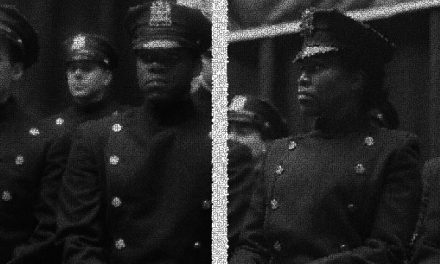It is quite a joy to discover one of your personal fetishes on the internet.
Indeed, I was beginning to feel that I was the only one with a dark, long-term fascination in sitcom studio floorplans, but in recent years there have been one or two articles that have started referencing similar fascinations. More reassuring, though not for the wallet, there are illustrators out on the net who sell sitcom floorplan prints that can adorn your walls and bemuse your house-guests. It is comforting to know you are not alone with such peculiar fixations, but sharing an interest does not explain the interest itself; I began to wonder what it was about sitcom floorplans that (re)capture audience’s interest in particular shows.
It is often assumed that a fixation with detail is the privy of the hard-core science-fiction fan – an archetype I would probably be wise not to deny at this juncture. As a nerdy youth I picked up a copy of Mr Scott’s Guide to the Enterprise, a book that illustrated diagrammatic floorplans for the fabled Star Trek ship that mixed set layouts with interconnected fictional interior spaces. Aside from diagrams, the book covered both the Enterprise’s diegetic history and functionality – after all, this book was, as the title suggests, property of the Enterprise’s chief engineer, Mr Scott.
The Star Trek book offered a level of detail people in and outside of The Big Bang Theory would expect from science-fiction fans. In fairness, Fan Studies has gone a great distance to quash some of these cultural attitudes to science-fiction (whereas Sheldon Cooper has probably gone some way to re-instate them), yet we see through an interest in sitcom floorplans, this fascination is not generically assigned. I feel the Star Trek book is evidence of a consumer’s desire to shift a particular show from its acknowledged fictional spectacle into a functional real-space through an established mise en scène. Sitcom floorplans would suggest this interest is not relegated to science-fiction enthusiasts, even if the practice is perhaps more prominent within that particular genre.
One television attribute that often connects television science-fiction and sitcom genres is seriality; both genres are commonly commissioned for long-term broadcasting and look to fixed sets to manage production time and budget. Sergie Dias Branco’s (2013) exploration of sitcom habitats considers the relationship between the production practicalities of the sitcom set and its diegetic functions. In turn, he highlights how the sitcom’s central space, whether it is a public bar in Cheers, or a private apartment in Will and Grace, become homes for the characters – and I would argue they become homes for the audience as well. On a serialised show, these homes become familiar to audiences and sites of pleasure where the returning viewer re-visits familiar friendly faces; places where “everybody knows your name”.
I’ve always considered that one of the strengths of serial television is the bond forged between audience and fiction characters. These bonds can outstrip those real-world connections with a neighbour or even a relative. Through even semi-regular watching of serial television fiction, an audience will get to know the routines, habits and quirks of Captain Kirk or Sam Malone. They will know what makes Fraiser Crane click more than their co-worker, furthermore, they’ll probably care more if the former is fired than the latter. I would argue that at some level, an emotional connection between audiences and characters becomes inevitable in any form of serial drama. In sitcoms, the goal of characters is generally to amuse the audience, a positive association that strengthens their investment on serial viewing. Perhaps with genres that defy realism, be it through science-fiction’s unworldly concepts or structural elements such as pronounced comedy, the audience looks beyond the characters to the surroundings to reinforce the real from the unworldly. In making sense of the principle aspects of a drama, the audience turns to the spacial —and occasionally temporal—nature of the film-sets for support.
My interest in this topic was invigorated recently through a re-watch of the NBC hit sitcom The Golden Girls (1985-1992). This comedy situated four senior women living out their golden years in a Miami bungalow. The show lasted for seven seasons with the majority of scenes taking place within the fixed-set of the bungalow. Aesthetically, it is an unusual set-design structured to meet the required domestic sitcom conventions; an attractive and interesting living space can contribute to an audience’s comfort watch. Generally, the mise en scène for sitcoms tends to remain static throughout the series run (there are exceptions, Red Dwarf is a notable one). Even if events within the story change the established character set-up, their habitat rarely alters. Any set changes tend to be for production purposes rather than narrative. This makes the sets for sitcoms safe, familiar environments for the audiences to enter and even explore.

However, by focusing on the mise en scène in an attempt to make sense of a particular sitcom world, the audience can begin to unravel the space rather than secure its reality. The same can be said for science-fiction. Fans of Space: 1999’s Eagle ships negotiate the inconsistences between external model shots and internal sets in their goal for spacial consistency. Likewise, such spacial issues exist within The Golden Girls. Where Blanche Devereaux’s room is on the left of the living room in the Pilot, matching the exterior shot, it is moved to the end of the more obvious “bedroom corridor” on the right. Avid watchers will notice how in different episodes the bedroom occasionally shares the same location as the bedroom for housemate Rose Nylund. The kitchen in season one has a pantry secluded at the back of the set that for season two becomes a second entrance/exit for the kitchen area. This exit not only feeds into Sophia Petrillo’s bedroom location, it leads out to a garage that in the exterior shots is situated on the other side of the house. An unanchored bathroom set appears to appear only when required. All these architectural shifts make The Golden Girls house an impossible space.
Such changes would suggest production short-hands; choices made on set for efficiency and directorial purposes at that expense of an in-world architectural accuracy. As the audience scrutinise the mise en scène to make sense of the diegetic world, they risk destabilising it through fragmented production decisions that bare no relationship or intent to protect a system of space. As a result, floorplans for The Golden Girls offers no definitive measure of diegetic clarity; they expose the real truth that these are first and foremost shows, not worlds.
Beyond realising fictional spaces, the lack of published floor-plans provides an opportunity for problem solvers to investigate and (re)construct worlds that carry significance for them. Several fans have used the virtual space of The Sims to render The Golden Girls bungalow in-world. One Golden Girl fan has made the house out of Lego. Timely to this article, there has been pressure on Lego to release an official Lego Golden Girls set with 10,000 public votes.
Whether some audiences are trying to rebuild a fictional world outside the confines of a television series (in some cases, quite literally), or looking to insert themselves into that world by focusing on its structural properties to strengthen its verisimilitude, the desire to transgress the limitations of television fiction is becoming more accepted and less ridiculed. Next time you see a door leading off from a room in your favourite show, think long and hard where it might lead to. You may find the results more satisfying than you’d imagine.
James McLean is a postgraduate researcher at the University of East Anglia. His thesis explores the industrial practices surrounding genre within the conception and commission of British television. James spent five years interviewing cast and crew of the FOX television series Millennium that formed the backbone of Back to Frank Black: A Return to Chris Carter’s Millennium published by Fourth Horseman Press.




